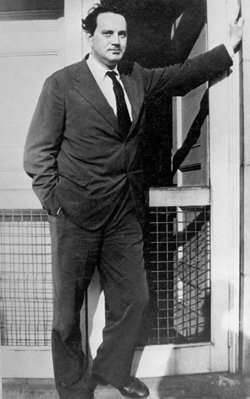Five years ago, in the early morning of July 24, 1998, Thomas Wolfe’s childhood home in Asheville, North Carolina, was nearly destroyed by fire. Since then, conservation specialists and staff at the Thomas Wolfe Memorial have worked to reconstruct the museum and hope to reopen it this fall.

Based on an investigation by the Asheville fire department and reports of suspicious behavior, authorities suspect the blaze was deliberately set to the two-story house that inspired Dixieland, Eugene Gant’s home in Wolfe’s 1929 novel Look Homeward, Angel. Starting in the dining room and spreading to an upstairs bedroom and then to the attic, the flames quickly consumed most of the roof, causing about $2.4 million in structural damage and the loss of irreplaceable furniture and other valuables. There were 800 artifacts in the Victorian Queen Anne–style house—everything from the bed in which Wolfe’s brother Ben died in 1918 to a silver serving set from the dining room, a wedding-anniversary present his father, William Oliver Wolfe, gave his mother, Julia, in the 1890s. All of the items were damaged; 200 were destroyed.
Investigators are still looking for the person responsible for the fire.
The renovation of the house, which was built in 1883, began last March and is being funded by a variety of sources, including contributions to the Fire Fund, which was established by the Thomas Wolfe Memorial staff; sales from auctions; and other fundraising events. Prior to the fire, plans had been made for a $400,000 renovation, including minor cosmetic repairs and a few structural improvements, but this money quickly dwindled in the initial stages of the reconstruction.
As of this writing, the house is roughly 70 percent restored—most of the structural elements are in place. Using photographs taken prior to the fire as guides, conservationists are now working to ensure that details such as the furniture and the interior molding and woodwork are reconstructed in such a way that the character of the house is maintained. Specialists are also using the 17 layers of paint and wallpaper on the interior walls of the house as a kind of time line to restore the house to its appearance in 1916, the last year Wolfe lived there.
“We’ve done an incredibly good job of maintaining the site in light of this horrible thing that’s happened,” says Steve Hill, site manager. “It really has been a miraculous story of loss and recovery, and it underscores the tenacity of the folks around this area—we don’t give up on something because it’s hard.”
For further information about the Thomas Wolfe Memorial or to contribute to the Fire Fund, visit the Web site at www.wolfememorial.com or call (828) 253-8304.
Suzanne Pettypiece is managing editor of Poets & Writers Magazine.








